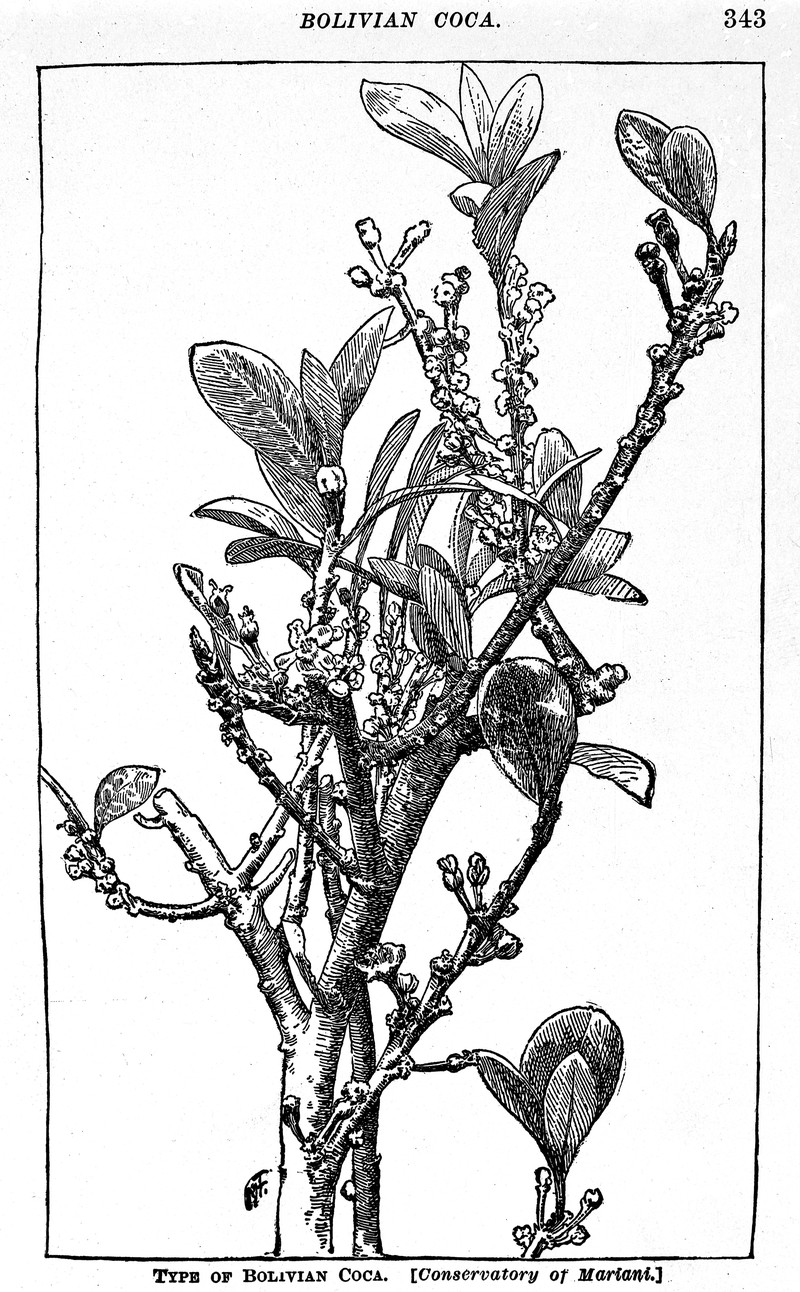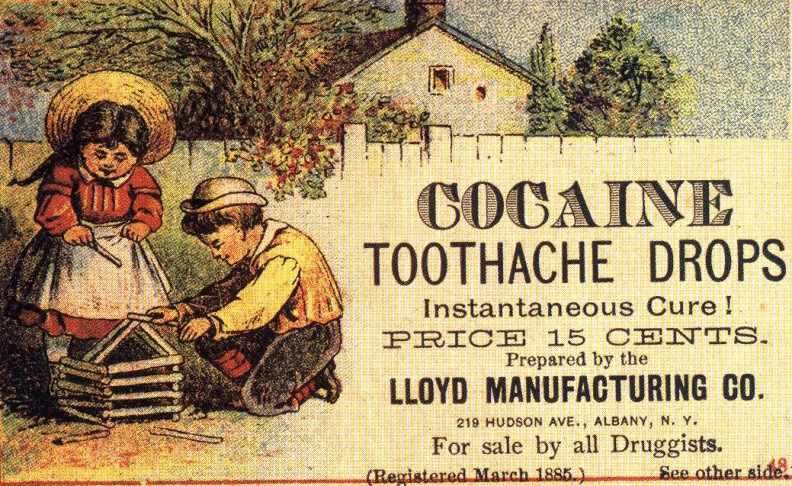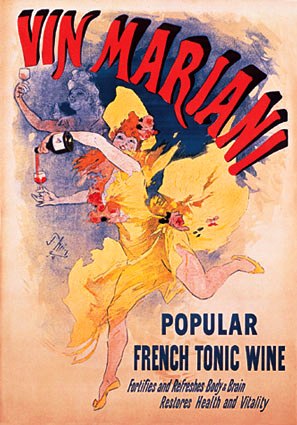The Origin Of The Word ‘Cocaine’
It’s a tale of a leaf, a graduate student, and alkaloid science.
 Science Diction is a bite-sized podcast about words—and the science stories behind them. Subscribe wherever you get your podcasts, and sign up for our newsletter.
Science Diction is a bite-sized podcast about words—and the science stories behind them. Subscribe wherever you get your podcasts, and sign up for our newsletter.
Cocaine takes its name from the leaves of the Andean Erythroxylum coca plant—and from the doctoral thesis of a German graduate student.

It all started in 1859, when a large shipment of leaves from South America landed in the lab of a 26-year-old German chemistry student named Albert Niemann. “The plant looked decidedly normal,” write Lydia Kang and Nate Pedersen in their book Quackery, “almost innocent, just another shrub in a sea of shrubby plants.”
Those unassuming leaves were from coca, a plant native to the Andes in South America. The Inca had chewed the leaves from the plant regularly as a stimulant since 3000 BCE. When the Spanish arrived in the area in the 16th century, they went through periods of attempting to ban, regulate, and tax the plant, before eventually trying the leaves themselves and experiencing the stimulating effects. The conquistadors brought the coca home to Europe, though the plants didn’t grow popular right away—coca was tough to transport and often arrived rotten, and Europeans were more dazzled by the conquistadors’ gold haul anyway.
[Why you shouldn’t throw your contact lenses down the drain.]
By the time the leaves landed in Niemann’s lab in Germany in the 19th century, the science of alkaloid extraction was booming. “Chemists were starting to explore not just ‘Why does an extract from this plant work?’ but ‘What is the single component to a particular soup of compounds that actually gave it its potency or caused it to have an actual effect?'” says Kang. At the time, morphine was being extracted from opium as a medicine, and it inspired Niemann to look into what caused the mysterious effects of the coca plant.
The young graduate student set to work attempting to isolate the active ingredient from the coca leaves. He succeeded and called the alkaloid cocaine, earning his doctoral degree and setting the stage for a notorious drug.
You may have heard an old playground rumor that what gave Coca-Cola its buzz back in the day was a tiny bit of cocaine. That’s not just a rumor. According to Quackery, the drink did contain 1/400th of a grain of cocaine per ounce of syrup in 1905 (the exact amounts in other years are unknown). The soda was cocaine-free by 1929.
Pharmacist John Pemberton was sabered in the chest during a battle in the Civil War. After becoming addicted to morphine during his recovery, Pemberton began experimenting with finding a new, less addictive painkiller. His solution was a cocaine-laced alcoholic drink—the first iteration of what would become Coca-Cola in 1886.
But Pemberton was neither the first nor the last to dabble in using cocaine as a painkiller. The medical community had begun to embrace the use of the substance. In fact, you can see that in the name Niemann gave the substance—the suffix -caine is also found in novocaine, which is a similar chemical compound and, like cocaine, can function as a topical anesthetic, says Kang.

“Back in the old days when there was no anesthesia aside from either hitting somebody on the head or getting them terribly drunk or getting them completely high on opium, there weren’t good anesthetics out there,” says Kang. “The search for anesthesia was a huge thing.”
In 1884, an ophthalmologist successfully used cocaine as a topical anesthetic during eye surgery, and published his results in the British journal The Lancet. Inspired, an American doctor named William Stewart Halsted (who would later go on to found Johns Hopkins Hospital) used cocaine to numb the pain of dental surgery. Private companies hopped on the bandwagon, manufacturing pain-relieving products like Roger’s Cocaine Pile Remedy and Lloyd’s Cocaine Toothache Drops. These early experiments with cocaine were steps on the path toward different forms of anesthesia, says Kang.

And Coca-Cola was far from the only beverage that contained a dash of the substance. In the wake of the medical community’s embrace of cocaine, beverage makers leaned into the new substance as well. In France, a coca leaf-infused “tonic wine” called Vin Mariani took the country by storm—Arthur Conan Doyle, Queen Victoria, Pope Pius X, and Thomas Edison were reportedly dedicated drinkers.
[Are probiotics good for you? Not always.]
Despite cocaine’s popularity and prevalence, the drug would eventually fall from grace. There was one teeny, tiny issue with cocaine—it’s incredibly addictive. In fact, William Halsted, the doctor who experimented with the substance’s anesthetic properties, became addicted to the drug in his later years.
The 1900s brought a new wave of regulations in the United States, such as the Pure Food and Drug Act of 1906 and the Harrison Narcotics Tax Act of 1914, which were concerned with appropriately labeling, regulating, and ensuring the safety of various substances. Following these new regulations and increased involvement by the FDA, things cleaned up quite quickly in the early 20th century, says Kang.
“There’s no one element or medicine or herb that’s purely evil,” Kang says. “There’s always a sort of balance between: Could it have done something? How bad was it for you? And is there still room for it in modern medicine? Because, shockingly, there is room for lots of these things that we think are awful. Cocaine I think is also an illustration of [something that] can have some uses, but there is a really negative side. And we have decided in our modern day, the negatives far outweigh the positives.”
Yet, as Kang and Pedersen write in Quackery, while cocaine-laced products are off the market, Coca-Cola does still contain coca extract (minus the cocaine alkaloid), and “that little touch of history in every can of Coke connects you with a five-thousand-year-old story of humans getting high on cocaine.”

Johanna Mayer is a podcast producer and hosted Science Diction from Science Friday. When she’s not working, she’s probably baking a fruit pie. Cherry’s her specialty, but she whips up a mean rhubarb streusel as well.